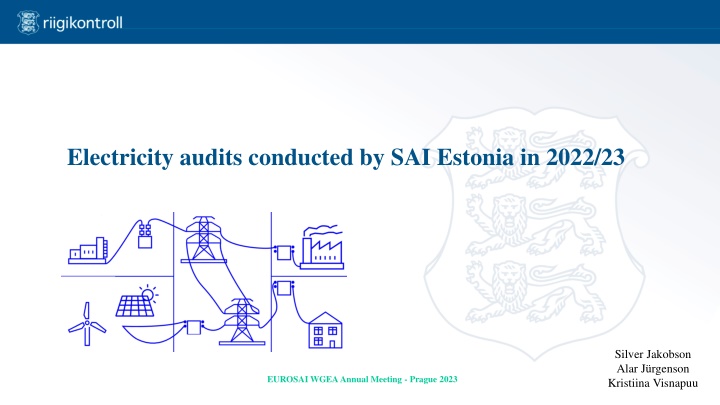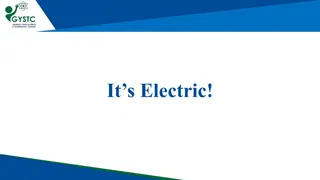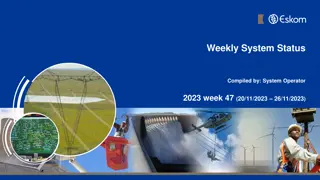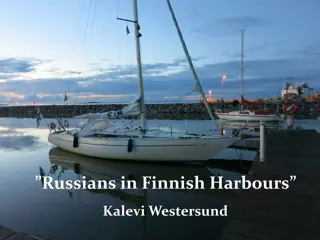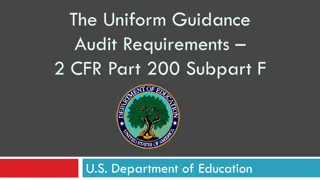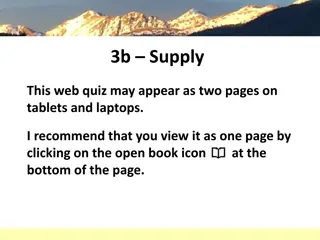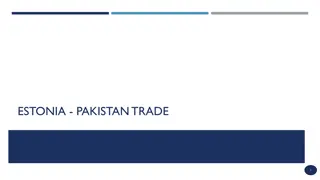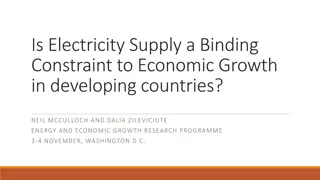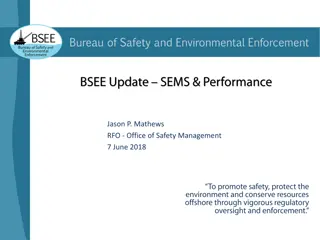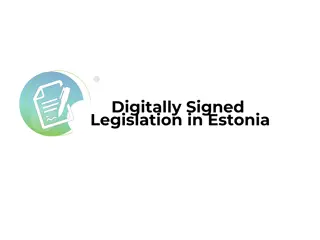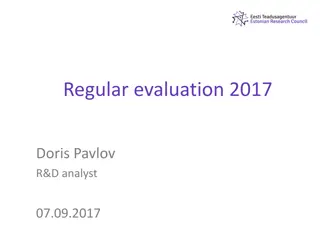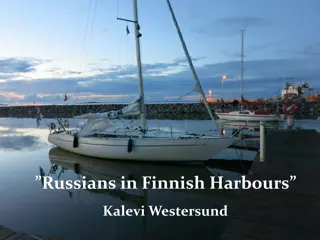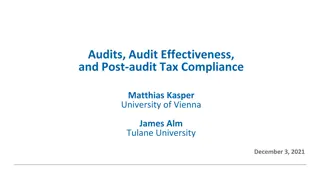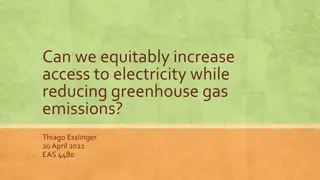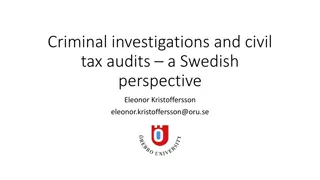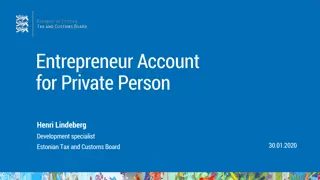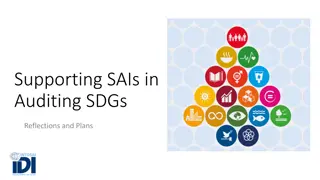SAI Estonia Electricity Audits 2022/23 and Security of Supply Report" (71 characters)
Electricity audits conducted by SAI Estonia in 2022/23 revealed concerns about the security of electricity production and supply. Issues include inadequate production capacity, mismanaged subsidies, and insufficient emergency preparedness. Recommendations focus on national strategies, resource assessments, emergency plans, and cyber threat mitigation. The AG's annual report highlights challenges in achieving renewable energy targets and emphasizes the need for actionable plans and infrastructure development to address resource adequacy.
Download Presentation

Please find below an Image/Link to download the presentation.
The content on the website is provided AS IS for your information and personal use only. It may not be sold, licensed, or shared on other websites without obtaining consent from the author.If you encounter any issues during the download, it is possible that the publisher has removed the file from their server.
You are allowed to download the files provided on this website for personal or commercial use, subject to the condition that they are used lawfully. All files are the property of their respective owners.
The content on the website is provided AS IS for your information and personal use only. It may not be sold, licensed, or shared on other websites without obtaining consent from the author.
E N D
Presentation Transcript
Electricity audits conducted by SAI Estonia in 2022/23 Silver Jakobson Alar J rgenson Kristiina Visnapuu EUROSAI WGEA Annual Meeting - Prague 2023
Audit on developing wind energy Audit on the security of supply of electricity production Report on the security of supply Report on developing wind energy Auditor General s Annual Report
Audit on the security of supply of electricity production MQ: Will production and transmission capacity cover electricity demand in 10 years and are vulnerable consumers protected against the spikes in electricity prices? National strategies and strategies of the TSO and state-owned electricity producer National and EU-level (ENTSO-E) resource adequacy assessments National emergency resolution plans for electricity (incl. desynchronisation) Business continuity risk assessments and plans of vital services Focus group interview with energy sector experts and scholars Analysis of subsidies to compensate high electricity prices (how much, to whom and on what conditions)
Report on the security of supply In 2027 Estonia might have a problem with electricity production if no measures are taken by the state The potential inadequacy of electricity production capacity was only confirmed in 2022, though known much earlier The subsidies and fixed price mechanisms created to alleviate high electricity prices were not properly analysed, reduced also the effect of demand response and further deepened the electricity deficit The preparations for responding to an electricity emergency have not been adequate: The ministry does not get the full Picture from the vital services providers The ministry has not been sufficiently monitoring the fulfilment of requirements Cyber threats have not been dealt with sufficiently Providers of vital services do not test their continuity plans
AGs annual report There is an array of possibilities for dealing with the resource adequacy problem, but Though there is a target for 2030 for RE (100%), there is no plan for reaching the target nor are the electricity grids being planned so to facilitate reaching this target No dispatchable electricity production units are being built or planned Estonia is in the process of acquiring a decision of the EC for authorising the granting of state aid to establish a capacity mechanism, but ACER has not approved the methodology of the ENTSO-E 2022 analysis There are no targets for electricity storage or demand response There are no decisions for developing cross-border electricity transmission capacities The current energy strategy is out of date and the new one won t be finished until 2025 If nothing is done, electricity prices will increase, and the government needs to prepare for that based on prior experience
Audit on developing wind energy MQ: Have the activities of ministries responsible for developing RE effectively contributed to the construction of wind farms? What measures does Ministry of Climate plan to respond to major changes and development needs in the energy system and to achieve the RE 100 target? Analyses of regulations and measure which are supposed to speed up the development and construction of wind farms (e.g related to planning and impact assessment procedures, s.c nuisance fee, financial guarantees, REPowerEU activities) Case studies of countries which have set national RE transition target(s) Case study analysis of wind park planning and environmental impact assessment procedures. Poll among the local governments where on-shore wind farm planning is taking place
Report on developing wind energy Impact of activities of relevant ministries to support development of RE has been small and/or activities are late A lot of unsolved problems remain which hinder quick deployment of RE* The appropriateness of the use of REPowerEU funds is questionable Development of RE is hindered by lack of data on the state of environment and inability to share existing data Ministry of Climate does not coordinate the development of the electricity grid to support production of large scale RE Ministry of Climate has sent mixed messages in relation to the need to develop off-shore wind parks and willingness to support them. 0.1% 0.3% 7.4% 8.7% Biogas Non-RE Biomass 18.1% Wind Hydro 65.4% Sun
Thank you! Questions? NAO Estonia reports on electricity will be made public in autumn 2023 (November - December). They will be available on the website of Riigikontroll: www.riigikontroll.ee silver.jakobson@riigikontroll.ee, kristiina.visnapuu@riigikontroll.ee, alar.jurgenson@riigikontroll.ee
